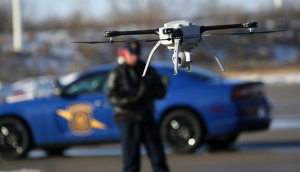Working with the FAA to start your DFR program
In our continued look at Drone as First Responder (DRF), we won’t get very far without understanding the regulatory requirements involved. If you’re unfamiliar with terms like Part 107 and Certificate of Authorization (COA) or Public Aircraft Operations (PAO), click here to learn more about the basics of FAA certification regarding unmanned systems and then head back here for this continued discussion.
There is a common assumption in our industry that when we talk about DFR, we are also talking about flying beyond the visual line of sight (BVLOS) of the pilot. While a handful of DFR programs exist with the authorization to fly BVLOS, many agencies start DFR programs that are conducted under Part 107. Some will look to expand into public aircraft operations under a COA while others plan to only operate under Part 107, keeping aircraft within line of sight.

Image Courtesy of 911 Security
When an agency does decide to incorporate BVLOS into their DFR program, they must make the decision whether they want to operate under part 107 or as a public aircraft operator. Both routes involve an approval process that can be long and arduous but ultimately successful if the agency is able to work consistently through the process with the FAA. On the Part 107 side, the agency must apply for a waiver to 107.31 and provide an appropriate safety case and concept of operations (CONOPS). These documents must speak to hazards and risk mitigation and detail clearly how the agency would maintain a high level of safety. On the PAO side, the BVLOS authority is granted within a COA as an exemption to FAR 91.113(b) which requires pilots to see and avoid other aircraft while operating within the national airspace system. Here’s an outline of the application and review process before the FAA can approve a BVLOS application for public aircraft operations: Please note that this is not in reference to the tactical beyond visual line of sight (TBVLOS) authorization that the FAA has made available to public safety sUAS operators.
- Agency develops CONOPS and risk assessment
- Agency emails FAA waiver team regarding intent to request BVLOS approval
- FAA schedules meeting for agency to provide presentation (note that this presentation must be given buy an agency representative, not a contractor or vendor)
- Agency provides powerpoint type presentation explaining CONOPS and answers questions from FAA
- FAA provides follow up feedback and asks agency to provide further clarification to comments and questions
- FAA makes determination on whether or not to approve BVLOS application and notifies agency
- If application is approved, agency is directed to complete new COA application for BVLOS in COA processing system
- COA is processed and granted to agency
Our experience with the FAA has been overwhelmingly positive. It’s our understanding that the FAA wants the use of public safety UAS to increase and is continually looking for ways to help public safety agencies maximize their effectiveness. If you have questions about this process, please feel free to reach out directly to the FAA or to the Skyfire team.
Check out previous blog posts within this series below:
- Drone as First Responder: Vol 1 | How to Increase Community and Officer Safety, Decrease Response Times and Increase Efficiency
- Drone as First Responder: Vol 2 | How is DFR being used today?
- Drone as First Responder: Vol 3 | How to Strengthen Community Support of a DFR Program.

Author: Ben Kroll
Ben Kroll is a co-founder and the Chief Operating Officer of Atlanta-based Skyfire Consulting. Ben manages the day to day operations at Skyfire which was founded in 2015 and serves the public safety industry by integrating drone technology into law enforcement and fire-rescue agencies. From a background in curriculum development as an FAA licensed flight instructor and commercial pilot, Ben has brought his manned-aviation experience to the drone industry and serves as a thought leader and international speaker on the integration of drones into multiple industries. As a member of the FAA Integrated Public Partnership program, Ben wrote the first of its kind “Beyond Visual Line of Sight” authorization and safety assessment for Chula Vista Police Department’s Drone as a First Responder Program.